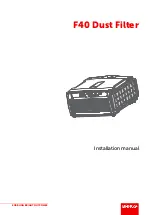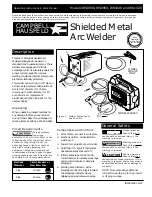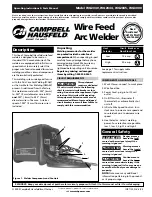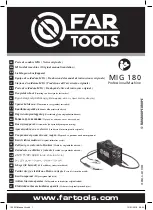
18
Installing the System
The circulation pump shall be the Grundfos
model UPS15-58FC/LC, 115 volt or equivalent.
The pump shall be pre-wired with a 6’ line
cord so that it can be plugged directly into
the 115 volt receptacle on the side of the
differential control. Isolation/Drain valves
(No. 6 & 7) must be installed on either side
of the circulating pump so that the pump can
be isolated from the collector loop. Repairs or
routine system maintenance can be completed
without introducing air into the system or
draining the HTF.
The expansion tank shall have a minimum 60
PSIG working pressure and have a total volume
of not less than 2.1 gallons. The expansion tank
shall be Watts Model ET-15 or equal (No. 11).
A high quality thermostatic mixing valve (No.
12) is a required component in all OG-300
certified systems and should be plumbed in line
with brass union connections for ease of future
repair or replacement. The specified mixing
valve shall be the Heatguard model HGBASE
or equal and shall have an operating range
between 95°F and 140°F. The mixing valve
shall be set to 120°F.
The temperatures generated by your system
will vary throughout the year. In the Northern
Hemisphere the water temperature will be
hottest in the spring and summer months while
cooler temperatures are to be expect from
November through March. On sunny days
system temperatures may range between 110ºF
to 180ºF depending upon the season and hot
water demand. The mixing valve described
above blends the hot and cold water supplies
to deliver hot water to your fixtures at a safe,
controlled temperature.
!
WARNING: SCALDING CAN
OCCUR WITHIN FIVE SECONDS
WHEN WATER TEMPERATURES
APPROACH 140ºF. THE MIXING
VALVE SHOULD BE ADJUSTED BY
YOUR CONTRACTOR TO PROVIDE
WATER TO YOUR FIXTURES AT NO
MORE THAN 120ºF.
T
he 3/4" cold water supply line to the solar
storage tank must be insulated with minimum
7/8" X 1/2" pipe insulation to a minimum
distance of 5' behind the storage tank, or to the
wall if closer than 5'.
Tank Sensor Placement
Figure 20 details the proper placement of the
solar storage tank sensor. Make sure the sensor
is secured to the threaded stud on the storage
tank with a 10-24 stainless steel nut.
Figure 18 TANK SENSOR
Thoroughly weatherize the wire connections in
accordance with the roof sensor detail above.
Replace the fiberglass insulation batting and
close the access cover.
A properly licensed contractor must make the
gas supply connection to the water heater or
solar storage tank.
The tank must be full of water before heater
is turned on. The water heater warranty does
not cover damage or failure resulting from
operation with an empty or partially empty tank.
We recommend the use of a 115 volt differential
control with a factory installed six foot line
cord. The installation requires one 115 volt
outlet to be installed near the solar storage tank.
Plug the control into the outlet. The circulation
pump line cord is plugged into the receptacle on
the side of the controller.
Figure 20
Tank Sensor















































